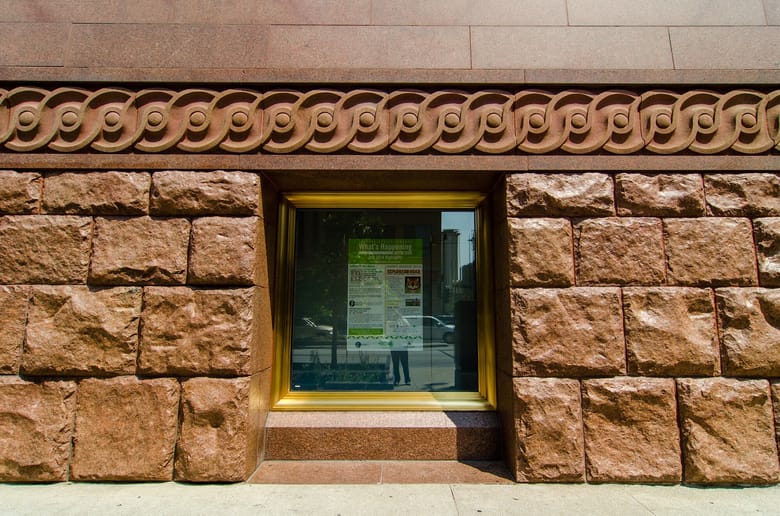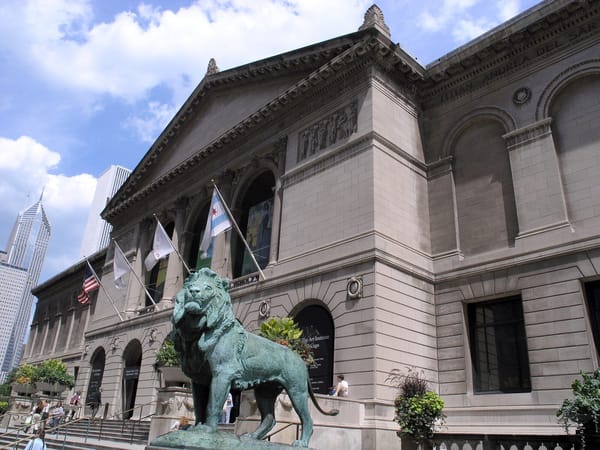Granite is a natural stone formed from the solidification of magma deep beneath the Earth's surface. It is characterized by its coarse-grained texture, high strength, and durability. These qualities make it a popular choice for architectural applications.
The use of granite in architecture dates to ancient civilizations when Egyptians, Greeks, and Romans used granite to construct monumental structures, such as pyramids, temples, and aqueducts.
Today granite continues to be used for monumental structures but is also seen applied as exterior cladding, interior finishes, and to create architectural or decorative elements such as columns, capitals, and moldings.
EXAMPLES IN CHICAGO:
- Art Institute of Chicago: The museum’s exterior is clad in granite, providing a sense of grandeur and permanence.
- The Rookery: This historic skyscraper, by Burnham and Root, completed in 1888 is known for its atrium, and features a granite façade as well as columns and other architectural elements.
- The Willis Tower (formerly the Sears Tower): Granite is used for the base of the tower, adding a solid and stable foundation.
- Harold Washington Library: The main branch of the Chicago Public Library features a granite facade and interior elements, adding to its grand and imposing presence.






















